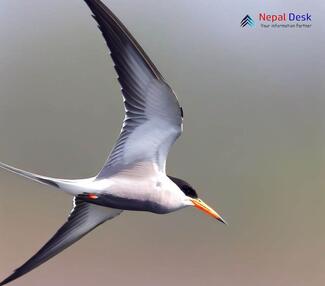Nestled amidst breathtaking landscapes and vibrant culture, Nepal offers an array of extraordinary experiences for nature enthusiasts. One such opportunity is the chance to spot the fascinating Black-bellied Tern (Sterna acuticauda) - a hidden gem for birdwatchers exploring this diverse region.
An Introduction to the Black-bellied Tern
The Black-bellied Tern is a striking bird species, identifiable by its slender body, black upperparts, and contrasting white underparts. With a forked tail and sharp wings, these agile birds are known for their incredible aerial acrobatics as they glide above the water in search of food. Primarily feeding on fish, these terns employ a unique plunging technique, diving into the water at high speeds to capture their prey.
Habitats and Distribution
Native to South Asia, this remarkable bird species can be found across India, Bangladesh, Myanmar, and Nepal. In particular, the lowland regions of Nepal provide an optimal environment for the Black-bellied Tern due to its network of rivers and wetlands. These habitats are essential for the terns as they require close proximity to bodies of water for breeding sites and hunting grounds.
Conservation Status and Challenges
Classified as ‘Endangered’ by the International Union for Conservation of Nature (IUCN), the Black-bellied Tern is facing an alarming decline in its population size. The primary threats to these birds stem from habitat destruction due to human activities such as dam-building projects, sand mining, and pollution of rivers. As a result, many conservation efforts have been undertaken in Nepal and neighboring countries, aiming to raise awareness about these majestic winged creatures and secure their future survival.
Spotting Opportunities for Birdwatchers
For avid birdwatchers seeking a glimpse of the elusive Black-bellied Tern, Nepal provides promising opportunities. Some of the best locations to find these birds include the Kosi Tappu Wildlife Reserve and the Chitwan National Park. Both protected areas teem with a diverse array of birdlife, with dedicated trails and guided tours for birdwatchers to explore.
To increase the chances of spotting a Black-bellied Tern, plan your visit during the dry season, typically between October and March, since water levels recede and reveal the terns' preferred sand banks for nesting.
Conclusion
Witnessing the enchanting presence of the Black-bellied Tern is a truly exceptional experience for birdwatchers in Nepal. Not only do sightings offer a glimpse of this rare species, but they also contribute to raising awareness about their conservation status. So, pack your binoculars and embark on an unforgettable journey to explore Nepal's rich and diverse birdlife as you search for this elusive feathered beauty.




